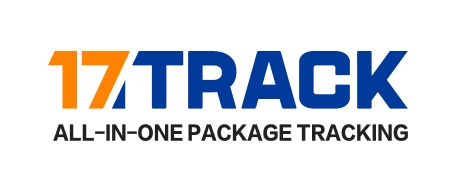There are significant differences between Chinese and Australian regional freight service providers in terms of business positioning, service models, transportation resources and customer compatibility. The following is a comparative analysis from the core dimensions:
I. Business Positioning: Full-Chain Integration vs. Deep Vertical Market Penetration
Full-chain integration service providers (such as Dongji International Logistics, Jicheng China-Australia Logistics)
Core advantages: Provide one-stop services from cargo packaging, customs declaration, transportation to destination delivery, covering the entire chain of sea, air, land transportation and customs clearance. For instance, Dongji International Logistics ensures seamless connection of each link through "integrated lean logistics services", while Jicheng China-Australia Logistics focuses on "door-to-door air/sea freight services", covering all scenarios such as FBA first leg, personal item moving, and commercial goods transportation.
Customer suitability: Suitable for customers with high requirements for service integrity, such as cross-border e-commerce sellers, large enterprises, and multinational companies needing customized supply chain solutions.
Deep vertical market penetration service providers (such as Ze Cheng, Ma Bang Yuntong Consolidation and Transportation)
Core advantages: Focus on specific markets or types of goods, reducing costs through intensive operation. For example, Ze Cheng specializes in dedicated lines covering the five major cities in Australia (Sydney, Melbourne, Brisbane, etc.), providing cost-effective consolidated services for large items like furniture and building materials; Ma Bang Yuntong Consolidation and Transportation attracts customers with "price advantages" and "promotional activities", with a 10KG freight rate of approximately 225 yuan, and offers packaging optimization suggestions.
Customer suitability: Suitable for cost-sensitive or single-type goods customers, such as small and medium-sized e-commerce sellers, individual movers, and enterprises requiring bulk transportation of large items.
II. Service Models: Standardized Services vs. Flexible Customization
Standardized service providers (such as Jicheng China-Australia Logistics)
Service model: Real-time tracking of goods through self-developed TMS logistics management system, providing visualized transportation services. For instance, Jicheng China-Australia Logistics has deep cooperation with shipping companies like COSCO and OOCL to ensure the timeliness of sea transportation and reduce operational risks through systematic management.
Advantages: High service stability, suitable for customers with strict requirements for transportation timeliness and safety.
Disadvantages: Low service flexibility, difficult to meet personalized needs.
Flexible customization service providers (such as Ma Bang Yuntong Consolidation and Transportation)
Service model: Provide value-added services such as personalized packaging suggestions, volume weight optimization, and promotional activities. For example, Ma Bang Yuntong's customer service patiently guides customers on how to package goods to save volume weight and offers freight discounts during events like 618.
Advantages: Services closely align with customer needs, suitable for customers with dual requirements for cost and service experience.
Disadvantages: Low service standardization, potential fluctuations in experience due to operational differences.
III. Transportation Resources: Monopoly of Leading Resources vs. Regional Resource Integration
Leading resource monopoly service providers (such as Dongji International Logistics)
Resource barriers: Long-term booking agreements with multiple international shipping carriers (such as COSCO, OOCL) to ensure cabin stability; own fleets and warehouses, forming a regional warehousing and transportation network.
Advantages: Low transportation costs and strong timeliness, suitable for large-volume cargo transportation.
Case: Dongji International Logistics' "multiple warehouses in multiple locations" model enables customers to flexibly choose warehouses, reducing transportation costs.
Regional resource integration service providers (such as Zhuhai Zhonghai Logistics, Macau Shipping Company Limited)
Resource barriers: Relying on regional ports, airports, and land transportation networks to integrate scattered resources for service provision. For example, Zhuhai Zhonghai Logistics covers the South China market through ports in Zhuhai, Shenzhen, and Hong Kong, while Macau Shipping Company Limited uses Macau Airport as a hub to radiate the Greater Bay Area.
Advantages: Strong penetration in regional markets, suitable for local demands.
Disadvantages: Limited resource scale, difficult to offer competitive prices compared to leading service providers.
IV. Customer Suitability: High-End Customers vs. Mass Market Customers
High-end customer service providers (such as Jicheng China-Australia Logistics) Customer positioning: Cross-border e-commerce sellers, large enterprises, and multinational companies requiring customized supply chain solutions.
Service value: Enhance customer supply chain efficiency through one-stop service, real-time tracking, and high timeliness.
Case: Jicheng China-Australia Logistics provides exclusive transportation solutions for FBA first leg customers to ensure timely warehouse entry.
General customer service providers (such as Mabang Yuntong consolidation and Panda EU transfer)
Customer positioning: Small and medium-sized e-commerce sellers, individual movers, and cost-sensitive customers.
Service value: Attract customers through cost-performance advantages and flexible services. For instance, Mabang Yuntong seizes the market with a low-price strategy of "10KG/225 yuan" and promotional activities, while Panda EU transfer reduces customer costs through customer service discounts.
Risk: Some service providers have hidden charges (such as "double clearance" fees of Jingguan International Consolidation), and customers need to choose carefully.


